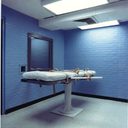
More than 2,600 Florida cases — including at least one capital case — may have been tainted by erroneous fingerprint analysis by a long-term employee of the Orange County Sheriff’s Office, according to letters sent to defense counsel by the Orange-Osceola State Attorney’s Office. The revelations were another in a series of events raising questions about the reliability of forensic evidence that is being used in capital prosecutions across the United States. In early February 2017, the Orange-Osceola State Attorney’s Office contacted defense attorneys in cases that involved Marco Palacio, a 17-year employee of the county sheriff’s office, to alert the defense to a pattern of “clerical errors, failure to identify prints of value and the mislabeling of print cards” by Palacio. At least one death row inmate, Bessman Okafor, is among the affected defendants. Orlando defense attorney Hal Uhrig said, “The wrong name on the wrong card, and all the sudden you get confirmation of a print that’s not there. That’s serious stuff.” The integrity of cases in Arizona was also called into question a few months earlier, after an investigation by KPNX found that Norman Wade, the lab director of the Maricopa County Medical Examiner’s Office, had a felony conviction for stealing a gun that had been entered as evidence at his previous job in Ventura County, California. The chief medical examiner was aware of Wade’s conviction when Wade was hired, but the information was never presented to defense attorneys in cases in which Wade had testified. Kindra Fleming, of the Arizona Justice Project, said, “I think juries had the right to at least hear it to evaluate for themselves whether this goes to his credibility. …Especially in these significant cases where people are now spending their lives in prison or sitting on death row.” In 2015, The Federal Bureau of Investigation admitted that examiners from the agency’s microscopic hair comparison unit had for decades provided flawed forensic testimony, including in at least 32 capital cases. A 2009 study, Invalid Forensic Science Testimony and Wrongful Convictions, found that flawed forensic analysis by prosecution witnesses was present in 60% of the trials of defendants who were later exonated by DNA testing.
In 2015, Texas executed Lester Bower in a circumstantial evidence case in which forensic testimony provided a vital link between Bower and the killings. Prosecution witnesses had falsely testified that the type of ammunition used in the murder was extremely rare. In 2016, Texas executed Richard Masterson despite charges that the prosecution had presented false forensic testimony concerning the cause of death. The defense alleged that prosecutors had concealed evidence that the medical examiner was unqualified to perform the autopsy, had falsified his credentials, and had presented false testimony in Masterson’s case and in a prior Ohio capital case that victims who may have died of natural causes had been strangled.
(R. Stutzman and G. T. Lotan, “More than 2,600 Orlando-area lawyers get letters warning about fingerprint expert,” Orlando Sentinel, February 6, 2017; W. Halloran and E. Wiley, “Lab director’s criminal record uncovered; what does it mean?” KPNX, November 19, 2016.) See Innocence.


